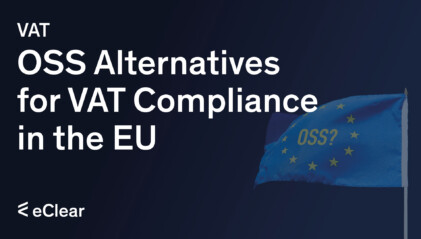In today’s digital age, SAF-T, endorsed by the OECD, is more than an acronym—essential for cross-border commerce. This format standardises accounting data, aiding both internal and external audits. As tax scrutiny on international transactions intensifies, SAF-T compliance keeps you ahead of the law. This guide offers actionable insights for businesses of all sizes, making SAF-T implementation non-negotiable for cross-border operations.
What is SAF-T?
SAF-T stands as a beacon of clarity in the labyrinthine world of tax compliance. Conceived by the Organisation for Economic Co-operation and Development (OECD), this digital framework aims to streamline the auditing process for tax authorities and businesses.
The primary objectives of SAF-T are to facilitate internal and external audits by standardising electronic accounting records and to enhance transparency in financial transactions.
At its core, a typical SAF-T file is XML-based, a format chosen for its versatility and widespread acceptance. This structure allows for the seamless integration of various accounting systems, thereby simplifying the arduous task of tax compliance.
Why is SAF-T Important?
In the intricate tapestry of global commerce, SAF-T’s importance cannot be overstated. It serves as a mutually beneficial framework that addresses the needs of both tax authorities and businesses.
Benefits for Tax Authorities
For tax authorities, SAF-T offers a streamlined data collection and verification approach. It enables more efficient tax assessments and minimises the scope for fraudulent activities, thereby fortifying the integrity of revenue systems.
Benefits for Businesses
Conversely, businesses find SAF-T a reliable ally for simplifying their tax reporting obligations. By adhering to a standardised format, they can easily integrate their accounting systems with those of tax authorities, making the entire process less cumbersome.
Streamlined Tax Reporting
SAF-T’s XML-based structure allows for streamlined tax reporting, reducing the administrative burden and freeing up valuable resources for core business activities.
Reduced Errors
The standardised format inherently reduces the likelihood of errors in tax reporting, thereby mitigating the risks of penalties and subsequent audits.
Easier Audits
Lastly, SAF-T makes audits more manageable for all parties involved. Its transparent and standardised format simplifies the verification process, making audits quicker, more efficient, and less intrusive.
SAF-T in the EU
As the European Union aims to harmonise its fiscal policies, adopting SAF-T in the EU has become a focal point for policymakers and businesses.
While SAF-T has yet to achieve blanket adoption across the EU, its presence is increasingly felt. According to a report by the European Commission, several member states are actively considering or have already adopted SAF-T protocols to some extent, recognising its potential to improve tax administration and compliance.
How to Implement SAF-T in Your Business
In the ever-evolving global commerce landscape, understanding how to implement SAF-T in your business is a regulatory and strategic imperative.
Before diving into SAF-T, conducting a thorough audit of your existing accounting and tax reporting systems is crucial. Consulting with tax experts and IT professionals can provide valuable insights into the gaps that must be filled. Businesses should also engage with their legal teams to understand the implications of SAF-T on data privacy and compliance.
Once the software is in place, training your staff on SAF-T protocols is essential. Regular updates and audits are also recommended to ensure ongoing compliance. According to a white paper by Ernst & Young, establishing a dedicated SAF-T compliance team can significantly reduce the risk of errors and non-compliance.
Common Challenges in SAF-T Implementation
Navigating the common challenges in SAF-T implementation is akin to walking a tightrope. While the benefits are manifold, the pitfalls are equally daunting.
Data Integrity
One of the most significant challenges businesses face is ensuring data integrity. Inaccurate or incomplete data can lead to non-compliance and hefty penalties. Implementing robust data validation processes and regular audits is recommended to maintain the integrity of your SAF-T files.
Software Compatibility
Another hurdle is software compatibility. Not all accounting software is equipped to generate SAF-T-compliant files, leading to potential bottlenecks. A report by Accenture suggests opting for software solutions that offer dedicated SAF-T modules or plugins, ensuring seamless integration with your existing systems.
Software Compatibility
Keeping up with regulatory updates is a challenge in itself. SAF-T guidelines are subject to change, and failing to adapt can result in non-compliance. Businesses should subscribe to regulatory update services or consult regularly with tax experts to stay abreast of any changes.
Timeline for SAF-T Implementation in the EU
The implementation of SAF-T in the EU has been a gradual process, marked by critical milestones that have shaped its adoption and integration into the tax compliance landscape.
2005: The Birth of SAF-T
The Organisation for Economic Co-operation and Development (OECD) introduced the concept of SAF-T to standardise electronic accounting records and facilitate audits.
2008: First Steps in the EU
Portugal became one of the first EU countries to adopt SAF-T, setting the stage for other member states to consider its implementation.
2010: Luxembourg Joins In
Luxembourg adopts SAF-T for VAT and other tax types, signalling growing acceptance within the EU.
2014: France Takes the Lead
France integrates SAF-T into its existing tax reporting framework, becoming a forerunner in its adoption among EU nations. France has been a forerunner in embracing SAF-T, incorporating it into its current tax reporting framework as early as 2014. The French Directorate General of Public Finance has reported a 20% reduction in tax-related errors since the implementation of SAF-T, underscoring its effectiveness.
2016: Poland Makes It Mandatory
Poland mandates using SAF-T for VAT-registered businesses, making it one of the first EU countries to do so.
2018: Germany’s Pilot Phase
In Germany, SAF-T is currently in the pilot phase, with the Federal Ministry of Finance rigorously evaluating its potential for nationwide implementation. A recent study by the University of Mannheim supports this effort, suggesting that SAF-T could significantly streamline Germany’s complex tax reporting landscape.
2020: Norway Sets an Example
Although not an EU member, Norway is an instructive example for the bloc. The country fully embraced SAF-T in 2020, making it mandatory for businesses. According to the Norwegian Tax Administration, this move has led to a 15% increase in tax revenue, attributed to more accurate reporting and reduced tax evasion.
2021: Ongoing Discussions and Evaluations
Several EU countries, including Austria and Belgium, are in discussions or pilot phases for implementing SAF-T, indicating its growing influence.
2022: Romania Joins the Fold
From 1 January 2022, SAF-T is also rolled out in Romania, where large Romanian-resident companies and certain foreign companies must comply.
2023: The Future Landscape
As of 2023, the European Commission is actively considering the broader adoption of SAF-T across member states, with many countries like Spain and Italy in the exploratory phase.






